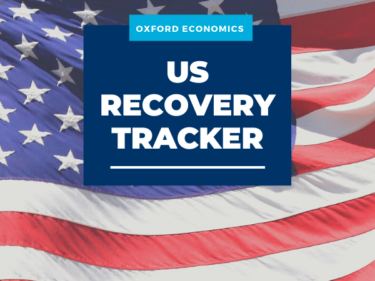Blog | 16 Oct 2020
US Recovery Tracker rises hesitantly in early October

While the US Recovery Tracker posted its strongest gain in six weeks, rising 1ppt to 82.1 in the week ended Oct 2, it merely regained its level from two weeks prior. Five of the tracker’s six subcomponents improved, led by strong gains in employment and production. The modest rise in health conditions was an anomaly, as daily Covid-19 infections are rising again. Demand remained hesitant in early October and prone to relapse with colder weather approaching.
With the prospects of an immediate fiscal relief package dimming, the risk is growing that declining income and reduced savings buffers will constrain household spending in coming months, especially among the most vulnerable tranches of the population. The upcoming elections carry upside and downside risks for the economy, but a lapse in income support until 2021 would leave the US consumer quite exposed during the fall and early winter.
![]()
Tags:
You may be interested in

Post
Eurozone inflation to take a toll on consumer spending growth
Eurozone consumer spending was poised to drive growth in 2022, but increasingly consumers' underpinnings have become shaky. While we still expect a solid rebound in Q2 as the economy emerges from the Omicron wave, headwinds are mounting for the rest of the year. In particular, soaring energy prices, a consequence of Russia's invasion of Ukraine, are squeezing real incomes and eroding the purchasing power of savings.
Find Out More
Post
US Recovery Tracker offers optimism despite several headwinds
The US Recovery Tracker is back within reach of its pre-Covid baseline, rising 0.4ppts to 99.8 in the week ended March 4 – its highest level since mid-December. Continued improvement in health conditions drove the increase, and mobility rose above its pre-virus level.
Find Out More
Post
As Omicron fades, US Recovery Tracker gains
The US Recovery Tracker rose 1.3ppts to 98.4 in the week ended February 18, its highest level in two months as the spread of the Omicron variant slowed and demand for services accelerated.
Find Out More